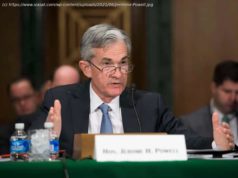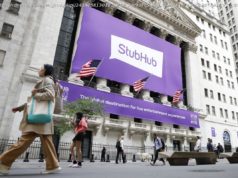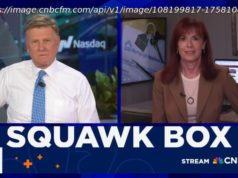The Labor Department says the unemployment rate fell to 4.2 percent, the lowest level since February 2001
Washington — The U. S. shed 33,000 jobs in September because of Hurricanes Harvey and Irma, which closed thousands of businesses in Texas and Florida and forced widespread evacuations. It was the first decline in nearly seven years.
The unemployment rate fell to 4.2 percent from 4.4 percent, the Labor Department said Friday, the lowest level since February 2001.
Looking past the hurricanes’ impact, the job market and economy generally look healthy. Job growth is likely to rebound in the coming months as businesses in the area reopen and construction companies ramp up repair and renovation work.
Last month’s drop was driven by huge losses in restaurants and bars, which shed 105,000 jobs, a sign of the damage to Florida’s tourism industry.
Roughly 1.5 million people were unable to work last month because of the weather, the government said, the most in 20 years.
Hourly workers who couldn’t work and missed a paycheck were counted as not working, which lowered September’s job totals. That’s true even if those employees returned to work after the storm passed.
The unemployment rate fell because it is calculated with a separate survey of households. That survey counted people as employed even if they were temporarily off work because of the storms.
As a result, the drop in the jobless rate is a sign the job market improved outside hurricane-hit areas. The proportion of adults with jobs rose to 60.4 percent, the highest since January 2009.
Average hourly wages rose 2.9 percent from a year earlier, a solid gain. But the government said that figure was artificially inflated by the loss of so many lower-paid workers in hurricane-hit areas.
More than 11 million people had been employed in the 87 counties in Texas and Florida that were declared disaster areas, the government says. That’s equal to about 7.7 percent of the nation’s workforce.
Other recent indicators point to a solid economy and job market.
On Wednesday, a survey of services firms — covering restaurants, construction companies, retail stores, banks and others — found that they expanded in September at their fastest monthly pace since 2005. That followed a survey of manufacturers, which found an equally strong gain. Factory activity expanded at the fastest pace in more than 13 years.
There are signs that a rebound from the hurricanes is already boosting the economy. Auto sales, which had been lackluster this year, jumped 6.1 percent to more than 1.5 million in September from a year ago, according to Autodata Corp., as Americans began to replace cars destroyed by the storms. That increase in purchases should soon lead automakers to step up production.
Harvey caused about $76 billion to $87 billion in economic losses, according to Moody’s Analytics, an economic consulting firm. The estimate includes damage to homes and businesses as well as lost business and economic output. That calculation would make Harvey the second-worst U. S. natural disaster, after Hurricane Katrina in 2005.
Irma will likely end up having caused $58 billion to $83 billion in economic losses, Moody’s forecasts. Maria, which hammered Puerto Rico and the U. S. Virgin Islands, could cost $45 billion to $95 billion, though that is a preliminary estimate.




![Działo się w czwartek. Oto najważniejsze wydarzenia [SKRÓT DNIA]](http://nhub.news/wp-content/uploads/2025/09/thumbeb996d0ac28669e11e1ade949fe29ee6-100x75.jpeg)

